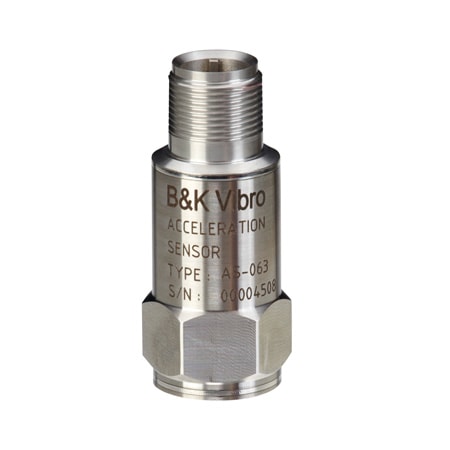- Consider the type of measurement – vibration, motion, shock, or seismic.
- Type of acceleration – static or dynamic.
- Device size – handheld, medium, or heavy machinery.
- The environment – temperature and gravity can affect some accelerometers.
- Measurement range and sensitivity of the accelerometer
Call us at 1-888-826-6342 to get assistance on selecting the right accelerometer for your application, or buy from our range of accelerometers here.
Accelerometer Specifications
Dynamic Range is the +/- maximum amplitude that the accelerometer can measure before distorting or clipping the output signal. Typically specified in g's.
Frequency Response is determined by the mass, the piezoelectric properties of the crystal, and the resonance frequency of the case. It is the frequency range where the output of the accelerometer is within a specified deviation, typically +/- 5%. g 1g is the acceleration due to the earth's gravity which is 32.2 ft/sec2, 386 in/sec2 or 9.8 m/sec2.
Grounding - There are two types of signal grounding in accelerometers. Case Grounded accelerometers have the low side of the signal connected to their case. As the case is part of the signal path and may be attached to a conductive material, care must be used when using this type of accelerometer to avoid noise from the ground plain. Ground Isolated accelerometers have the electrical components isolated from the case and are much less susceptible to ground induced noise.
High Frequency Limit is the frequency where the output exceeds the stated output deviation. It is typically governed by the mechanical resonance of the accelerometer.
Low Frequency Cut-off is the frequency where the output starts to fall off below the stated accuracy. The output does not "cut-off " but the sensitivity decreases rapidly with lower frequencies.
Noise - Electronic noise is generated by the amplifying circuit. Noise can be specified either broad band (specified over the a frequency spectrum) or spectral - designated at specific frequencies. Noise levels are specified in g's, i.e. 0.0025 g 2-25,000 Hz. Noise typically decreases as frequency increases so noise at low frequencies is more of a problem than at high frequencies.
Sensitivity is the output voltage produced by a certain force measured in g's. Accelerometers typically fall into two categories - producing either 10 mV/g or 100 mV/g. The frequency of the AC output voltage will match the frequency of the vibrations. The output level will be proportional to the amplitude of the vibrations. Low output accelerometers are used to measure high vibrational levels while high output accelerometers are used to measure low level vibrations.
Temperature Sensitivity is the voltage output per degree of measured temperature. The sensors are temperature compensated to keep the change in output to within the specified limits for a change in temperature.
Temperature Range is limited by the electronic micro circuit that converts the charge to a low impedance output. Typically the range is -50 to 120C.
Other Considerations when choosing an Accelerometer:
The mass of the accelerometers should be significantly smaller than the mass of the system to be monitored. The accelerometer dynamic range should be broader than the expected vibration amplitude range of the sample. The frequency range of the accelerometer should fit the expected frequency range. The Sensitivity of the accelerometer should produce an electrical output compatible with existing instrumentation. Use a low sensitivity accelerometer to measure high amplitude vibrations and conversely use a high sensitivity accelerometer to measure low amplitude vibrations.


